Stars never fail to captivate with their enigmatic charm, leaving us no choice but to let our imaginations run wild as we gaze up at the night sky. It’s almost as if stars are celestial beings, their brilliance magnified by the multitude of souls they house. Yet, despite our comprehension of the scientific facts surrounding stars, we can still spend countless hours reclining on a sandy shore, mesmerized by the vast expanse of the starry night.

What is the total number of stars in the universe
At times, when gazing upon the vast expanse of the celestial sphere, one might believe that it is an impossible task to tally up the stars. However, our intellectual capabilities have taken on this challenge and have arrived at the astonishing conclusion that there are a mind-boggling 70 sextillion stars in the Universe! This mind-blowing figure is composed of 22 zeros. Unfortunately, only a mere 8000 of these stars are visible to the naked eye.

The Lifespan of Stars
Stars have a lifespan that spans millions of years, during which they emit light and heat. However, as their outer layers cool down, their hydrogen supply gradually diminishes, leading to the cessation of thermonuclear reactions within the star. As a result, the cooled layers take on a red hue, causing the star to transform into a red giant. Over time, the red giant gradually transitions into a white dwarf, and in some cases, even collapses into a black hole.
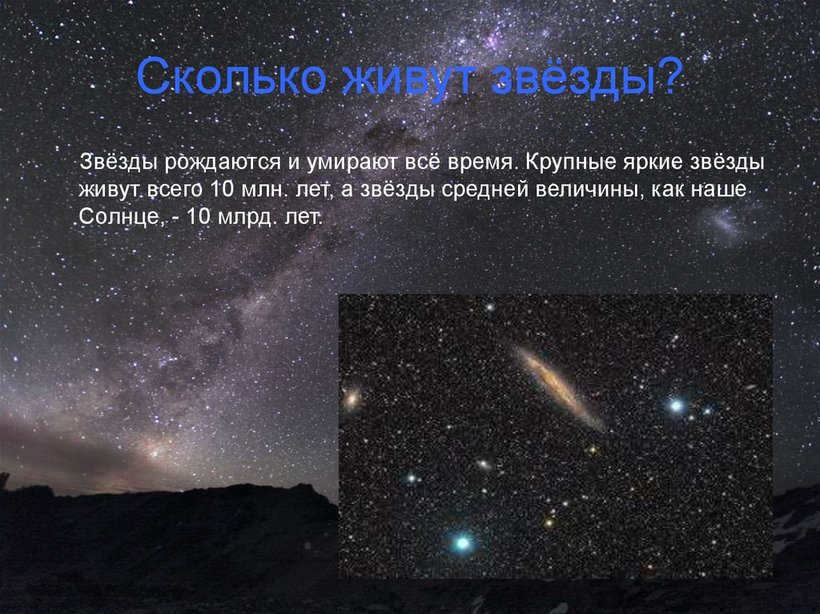
What sets stars apart from one another
Stars can always be distinguished:
The tiniest dwarf star has been discovered within the Milky Way galaxy. However, it is larger in size compared to the largest planet, Jupiter. Additionally, stars can emit a yellow, blue, or red glow depending on their temperature. Although we cannot see this with the naked eye, we perceive the brightness of various stars differently. The hottest stars appear blue, while the coolest stars appear red.

Images of the Celestial Sphere
If one traces imaginary lines connecting the stars, and possesses a vivid imagination, various objects, individuals, and animals can be perceived. These formations of stars create recognizable patterns, known as constellations. Presently, there are approximately 88 recognized constellations, each named after animals, people, or objects, such as the Lion, the Swan, and the Shield. Among the most well-known constellations are the Big Dipper, the Little Dipper, Orion, and the zodiac constellations. It is not without reason that even in ancient times, these arrangements of stars were named in honor of mythical characters.
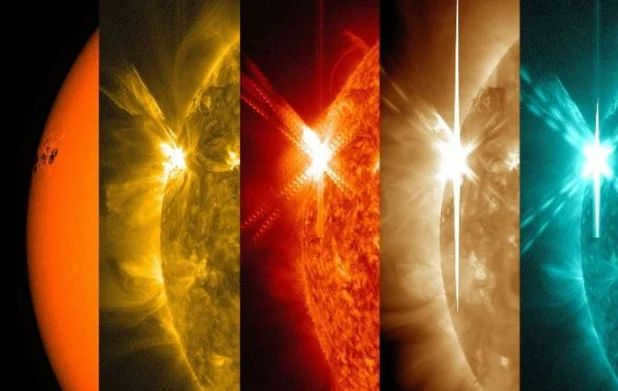
Star spectra serve as unique identification cards for celestial bodies, providing valuable information about their various characteristics. These spectra allow scientists to determine a star’s luminosity, distance from Earth, atmospheric composition, rotational velocity, and even the dynamics of its orbit around a central point of gravity.

In today’s fast-paced society, it is no longer sufficient to solely rely on the education provided in school. It is crucial to acquire valuable knowledge about finance and investments in order to secure one’s financial well-being.
Take control of your future by expanding your understanding and abilities in financial literacy. Access FINANCIAL LITERACY online now.

Join us today and take the first step towards achieving your goals
Understanding the concept of spectral class
A spectral class is a system used to categorize stars based on the temperature of their photosphere. This classification helps us understand the different physical properties of stars, including their atmosphere, pressure, magnetic field, electric fields, chemical composition, and rotation. By analyzing stellar spectra, scientists can gain valuable insights into the nature of celestial bodies.
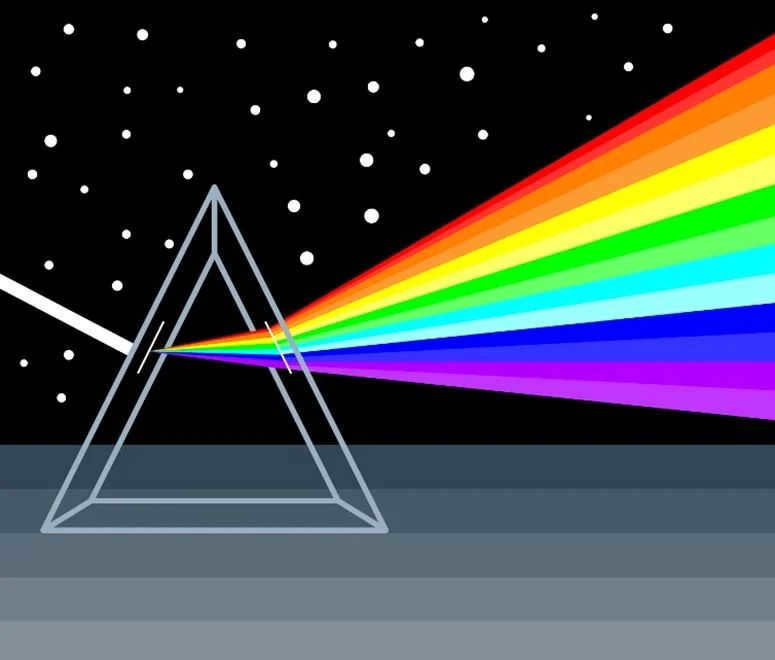
A device used to acquire and visually examine a range of colors is referred to as a spectroscope. In the event that the color spectrum is captured on a photographic plate, the device is known as a spectrograph. While observing the sun’s visible surface in the sky, Joseph Fraunhofer, a German scientist, discovered the presence of narrow black lines within its uninterrupted spectrum. Shortly thereafter, Gustav Kirchhoff determined that any gas in a rarefied state has the ability to absorb light at specific wavelengths that it also emits. Thanks to this revelation and the laws of physics, experts were able to ascertain the chemical composition of the sun’s atmosphere, and the black lines were subsequently named absorption lines.
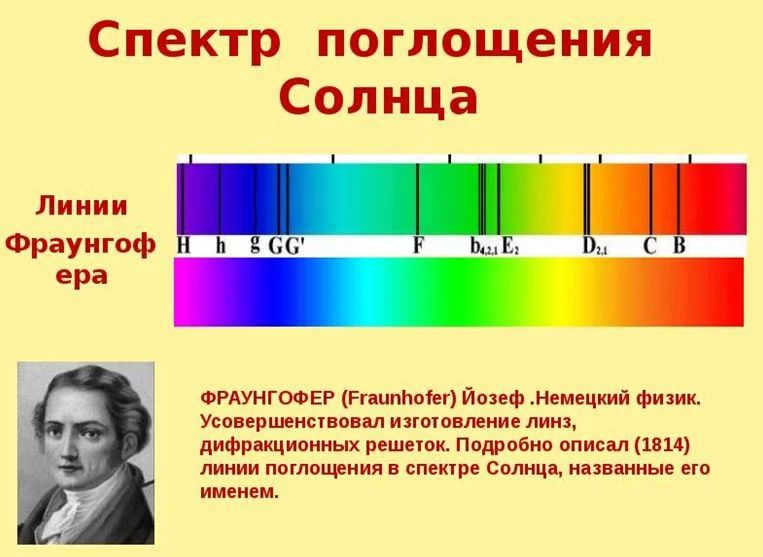
Source
In today’s era, there exist instruments that possess the capability to measure the spectrum of stars across various ranges, excluding the optical range. In order to achieve this, it is simply necessary to modify the filters and eyepieces.
Angelo Secchi’s lectures
During the 1860s and 1870s, Angelo Secchi conducted extensive research on celestial bodies, during which he developed the groundbreaking concept of spectral classification for stars. In 1866, he categorized stars into three classes based on their decreasing surface temperature indices, which directly correlated with changes in the color spectrum. Additionally, two years later, Secchi identified a separate group of stars known as carbon stars.

Angelo Secchi’s spectral classifications were in practical use until the turn of the 20th century, at which point they were superseded by the Harvard classification system, which remains in use to this day.
Over the course of several decades, the Harvard Observatory in the United States captured a multitude of photographs showcasing celestial luminaries. Through careful analysis of these images, scientists were able to establish a classification system for stellar spectra. From 1890 to 1924, Pickering and Cannon diligently worked on this classification system, ultimately creating what is now considered the primary classification system for stars. This classification system uses the letters O, B, A, F, G, K, and M to designate different spectral types. Interestingly, when this system was first developed, experts had not yet discovered the relationship between spectrum and temperature parameters. As a result, the order of the spectral classes coincided with the alphabetical arrangement of the letters.
Each category within the main spectral classification of stars is subdivided into subclasses. These subclasses are typically denoted by numbers ranging from 0 to 9, with 0 representing the hottest stars and 9 representing the coolest stars. The temperature of stars decreases continuously as you move along the sequence of spectral classes. The majority of celestial bodies fall within the O to M range of classes. What sets this range apart is its continuity, as the stellar characteristics gradually change from one class to the next.
A star’s surface color is an indication of its temperature, which in turn determines its spectral class. For instance, stars with the highest temperatures emit a blue light and are classified as O and B stars. Our Sun falls into the G2 spectral class and has a yellow color. On the other hand, the coldest stars emit a red light and are classified as K and M stars.

Source
There are also other classifications called L and T. These classifications are used to identify brown dwarfs that have varying temperature values. However, these brown dwarfs are relatively small, with a mass of about 0.1 times that of the sun, making them extremely difficult to observe. Additionally, they emit very little visible light.
Classification of Yerkes in relation to luminosity
The Harvard spectral classification of stars is determined by the temperature values of the photosphere’s luminosity. Based on this, stars with the same temperature but different luminosities can fall into the same category. To provide a more precise organization of celestial bodies, scientists have developed another classification based on luminosity, known as the Yerkes spectral classification. Luminosity classes are denoted by numbers ranging from 0 to VII, which are added after the star’s spectral class. The Sun’s luminosity is designated as V, so in the classification table (spectrum-luminosity), it is represented as G2V. In certain stars, a subclass may be added to the primary class:

Take Polaris as an example, it can be classified as F7 Ib based on its spectral class and luminosity class.



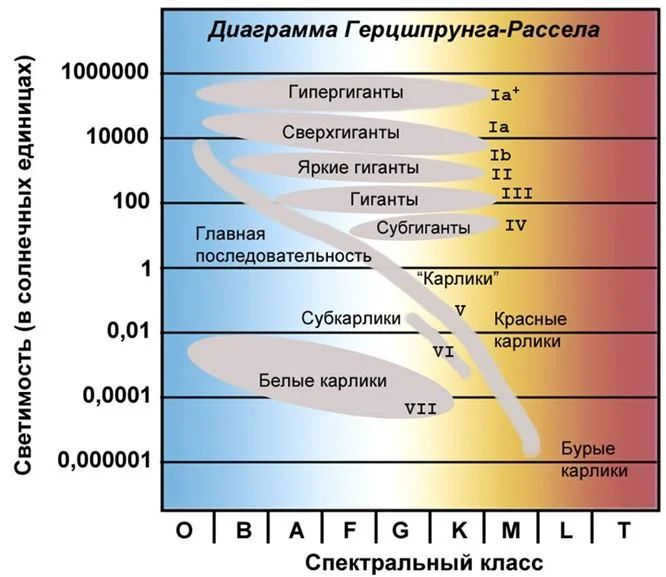
Source
Main sequence of stars
In the 20th century, astronomers made significant advancements in their understanding of stars through the study of outer space. During this time, a considerable amount of knowledge had been accumulated about the various types of stars, including their brightness, distance, and temperature. There arose a need to organize the classification of observed stars in the universe. This task was independently accomplished by two scientists, Einar Hertzsprung from Denmark and Henry Russell from the United States, who unknowingly created the same diagram. Today, this diagram is known as the Hertzsprung-Russell (HR) diagram, named in honor of both scientists. The HR diagram is a graphical representation with the vertical axis representing luminosity and the horizontal axis representing the surface temperature of a star.
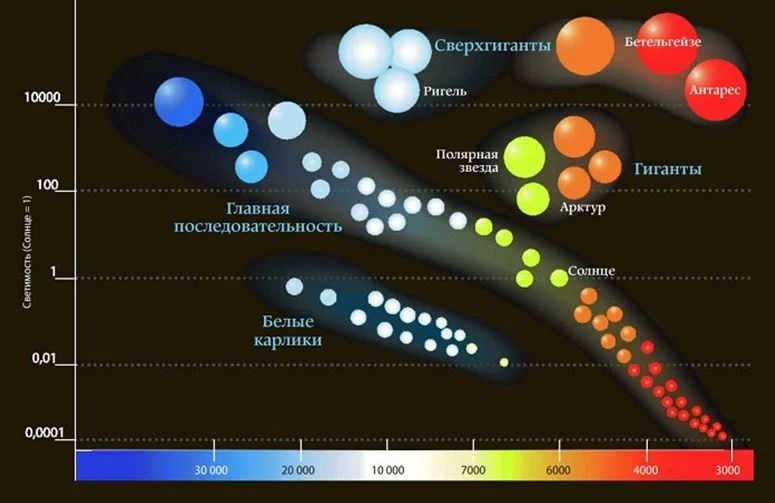
Source
The star’s position on the diagram was not arbitrary, but rather dependent on its temperature. As the temperature increased, the star’s position shifted towards the left. Based on the ratio of spectrum to luminosity, stars were categorized into three sequences. The main sequence stars occupy the diagonal line from the upper left to the lower right corner. Most stars, once fully formed, appear on this line. However, there is an exception called subdwarfs. Subdwarfs resemble main sequence stars in that they generate energy through hydrogen burning, but they have significantly lower luminosity. This is because they have a smaller amount of heavy elements in their composition, resulting in a smaller size.
The main sequence contains a significant number of closely packed objects. Within this sequence, a star typically spends around 90% of its entire lifespan. The Sun, too, resides in the center of this line.
All members of the main sequence possess a dense, hot core. Within this core, hydrogen undergoes thermonuclear reactions, resulting in its conversion into helium. Once the process of hydrogen burning ceases, the star’s presence within this sequence also concludes.
Following the main sequence, we find red giants and supergiants. These are luminous celestial bodies with considerable mass and luminosity. They are positioned in the upper right portion of the diagram. Their temperatures range from 3000 to 5000 0 C. Red giants and supergiants represent the final stage in the life cycle of stars, occurring after the main sequence.
Located at the lower left corner of the diagram are white dwarfs. They have a small diameter, yet their temperature is quite high. White dwarfs lack any energy sources and slowly lose heat, eventually becoming dark and imperceptible.
In the year 2018, scientists made a remarkable discovery of the farthest star within the main sequence, Icarus. Situated a staggering 9 billion light years away from our planet Earth.
Young Stars Prior to Reaching the Main Sequence
Among the stars observable in optical telescopes, there are the youngest ones. These stars are still in their pre-main sequence stage, where thermonuclear reactions can take place. However, the intensity of these reactions is relatively low, resulting in insufficient energy release to fully compensate for the energy expended on luminosity. The primary characteristic that sets these stars apart from main-sequence stars is their compression and heating caused by their own gravitational forces.
In certain terminology, pre-main-sequence stars are protostars in their last stages of formation.
The life cycle of a star is incredibly fascinating and enigmatic. Despite a wealth of knowledge, scientists continue to grapple with numerous questions. In the present day, novel techniques are being developed, devices and instruments are being enhanced, which will eventually enable the confirmation or revision of existing information, and perhaps even the discovery of previously unknown celestial entities.
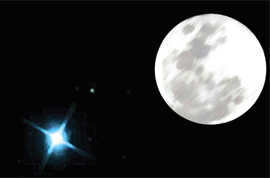
Stargazing is a highly ancient field of scientific inquiry that focuses on celestial bodies, including stars, planets, and more. Despite the long-standing efforts of astronomers to understand the cosmos, it remains largely unattainable due to the immense distances involved, which can span hundreds of thousands of kilometers. One commonly used unit of measurement in astronomy is the light year. The vast distances make it challenging to conduct thorough investigations of specific celestial objects.
There is a great fascination among people for observing the night sky, where numerous stars twinkle. If you pay close attention, you can clearly see the Milky Way, and if you search carefully, you can spot the constellations of the Big and Little Bears. The first one to light up the night sky is Venus. However, what many people fail to realize is that the dazzling night sky not only showcases stars but also planets, and the disparities between them are immense.
Description of planets
Planets are celestial bodies made of solid material and have a spherical or slightly oval shape. One defining characteristic of planets is their constant motion, as they “fly” around the stars that are in close proximity to them. For instance, our planet Earth orbits around the Sun, completing one revolution in a year. During this orbit, the Earth moves closer to the Sun and then moves slightly away from it, resulting in changes in seasons. Similar to other planets, the Earth follows a specific path known as its orbit. Any other objects present in this orbit are referred to as asteroids.
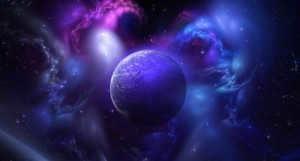
Planets never emit light on their own; instead, they act as mirrors, reflecting the light bestowed upon them by the stars.
The birth of the solar system and its planets occurred over five billion years ago. The tale of their origin goes as follows: a massive cloud of gas and dust materialized in the vast cosmic expanse. At its core, compression took place, leading to the ignition of a star through thermal nuclear reactions, which was later named the Sun. Within the remaining cloud, particles began to coalesce, gradually transforming into dense objects that eventually became planets. The intense heat emanating from the Sun caused light gases to rapidly evaporate, leaving the planets to swiftly solidify.
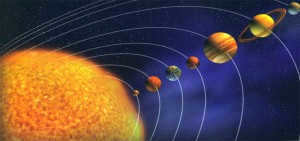

Planets within the solar system
Stars – meaning
A star is a celestial object where thermonuclear reactions occur. They are massive, bright, and radiant spheres. They form from a gas and dust medium due to gravitational compression. The temperature inside stars is extremely high, measured in millions of Kelvin (Kelvin is the unit used to measure star temperatures). Scientists frequently refer to stars as the primary bodies found in the Universe because they contain the majority of luminous matter in existence.
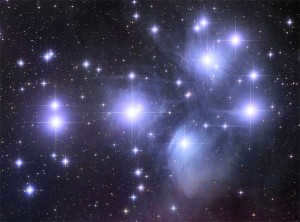
- Hydrogen makes up about 90% of stars.
- Helium accounts for slightly less than 10%.
- The remaining portion consists of a mixture of other gases.
When hydrogen undergoes a transformation into helium, an immense amount of energy is released, raising the temperature in the central region of the celestial body to 6,000,000 degrees Celsius. This energy is responsible for the stars’ ability to emit light.
The distinction between planets and stars
Planets and stars are fundamentally different from each other, although the distinction may not be immediately apparent. When gazing at the night sky, one may observe sporadic twinkling lights. This serves as the initial differentiating factor.
- Stars emit a brilliant, luminous glow that can be seen from any location on Earth. On the other hand, planets merely reflect the light they receive. Externally, planets appear as dark celestial bodies and without the radiance from a neighboring star, they would be invisible.
- Stars possess immensely high temperatures, a characteristic that planets cannot boast. At the surface of any star, temperatures can soar up to 40,000 degrees Celsius and within the core, they can reach millions of degrees. Present-day scientific technology has yet to develop an instrument capable of measuring such extreme temperatures.
- The mass of stars far exceeds the mass of planets. Stars have enormous dimensions, while planets appear to be mere crumbs.
- Stars are always stationary, unlike planets. They orbit around the axis of the stars. An example is Earth orbiting around the Sun, which remains stationary in relation to it.
- Planets are composed of solid and lightweight elements, including gases. Stars are filled with lighter substances.
- All planets have one or several satellites (for example: The moon is a satellite of Earth). Stars do not have the luxury of having their own satellites. However, the absence of a satellite does not necessarily mean that it is not a planet. This requires further investigation.
- All stars necessarily undergo nuclear reactions. Planets simply do not possess such characteristics.
So, there are numerous distinctions between planets and stars, although there are still many aspects that remain unexplored.
Based on all the information gathered, the primary contrast between a star and a planet is their ability to emit light. Venus appears radiant and captivating in the sky as it reflects the sunlight.
If you gaze upwards and observe a flickering object, you can be certain that it is a star. Conversely, if the object emits a steady, cool glow, it is a planet.
In comparison to stars, planets possess their own orbits and are unable to deviate from them. The orbit functions as a sort of pathway that enables the planet to revolve around its star.
The sizes of planets and stars are vastly dissimilar. Stars are colossal in magnitude, while planets appear minuscule in comparison, akin to tiny grains of sand.
Check out this video that compares the sizes of stars and planets:
Throughout history, people have always been fascinated by the breathtaking sight of the night sky filled with stars. This captivating view has captivated the minds of many as they seek to comprehend the laws of motion and the essence of celestial bodies. Alongside the stars, planets hold a significant place in observation. Despite their visual resemblance, planets are fundamentally distinct from stars, with significant variations in both their geometric properties and internal composition.

Planets and stars are both celestial bodies
Astronomy, being a scientific field that explores the Universe, offers the following definitions for the terms “stars” and “planets”:
- A star is a massive celestial body, spherical in shape, composed of plasma gas. Within the core of a star, continuous thermonuclear reactions occur, resulting in the release of energy which manifests as radiation across various parts of the electromagnetic spectrum. Some of this radiation is visible to the human eye, enabling us to witness the beauty of the night sky.
- A planet is a celestial body that is spherical in shape and orbits around a star in an elliptical path. Unlike stars, planets do not undergo nuclear reactions and therefore do not emit light on their own. Instead, they reflect the light that falls upon them from the star.
Hence, the main distinction between a planet and a star lies in the absence of a continuous thermonuclear fusion process in planets, which is responsible for generating immense amounts of energy.
Furthermore, a significant disparity between stars and planets should be acknowledged in terms of their vastly different sizes.
Due to the maximum speed of light propagation, which is 300,000 km/s, and the considerable distance of the nearest star, Proxima Centauri, being 4.24 light years away, the light emitted by the star takes more than four years to reach us. This means that the information we receive about the star is actually “outdated”.
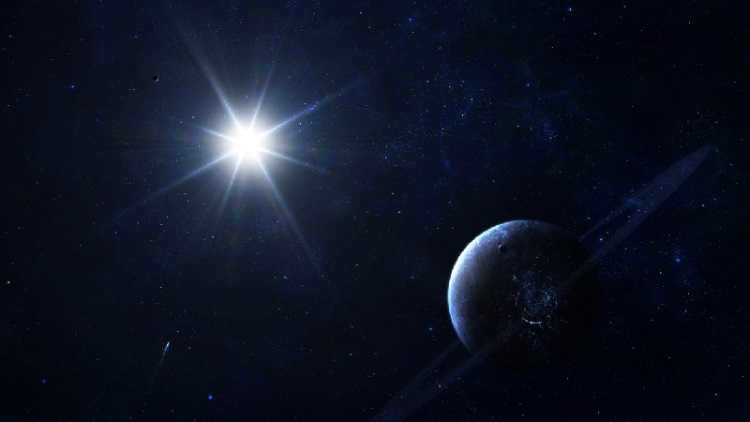
Why it’s “two significant distinctions.”
Aside from the fact that both types of celestial bodies share a similar spherical shape, they have fundamental distinctions in other parameters and properties:
- Stars serve as a source of light – emitting radiation across various wavelengths, including the visible range. Planets, on the other hand, act as cosmic “mirrors” reflecting the light from their own luminaries.
- In terms of appearance, luminaries appear as shimmering dots, while planets appear as steady glowing spots.
- The temperature of stars reaches from 2000-40000 ° C on the surface to 15*106 ° C in the core’s center (like the Sun). In contrast, planets have temperatures that are significantly lower by several orders of magnitude.
- The weight of stars is significantly greater than the weight of planets, often by several orders of magnitude. For instance, the Sun has a mass of 1.99*10^30 kg, while the Earth has a mass of 5.98*10^24 kg.
- Stars primarily consist of gaseous hydrogen and helium, whereas planets have a composition that includes solid and liquid elements.
- Luminaries emit radiation due to ongoing thermonuclear reactions occurring within them. Such processes do not occur within planets.
The Formation Process of Celestial Bodies
The enigma surrounding the inception of the universe is being scrutinized by scientists from all advanced nations. At present, the most popular model for the genesis of galaxies (star systems) is the nebular (nebula, from Latin – nebula) model, using the example of the formation of the solar system.
According to this conjecture, the Solar System came into existence 4.5 billion years ago from molecular hydrogen dispersed in space as sparse nebulae alongside copious amounts of dust clouds.
As a result of the mutual gravitational force and, potentially, an additional external impact in the form of a nearby colossal star or supernova explosion, a gravitational collapse ensued in the core of the cloud mass.
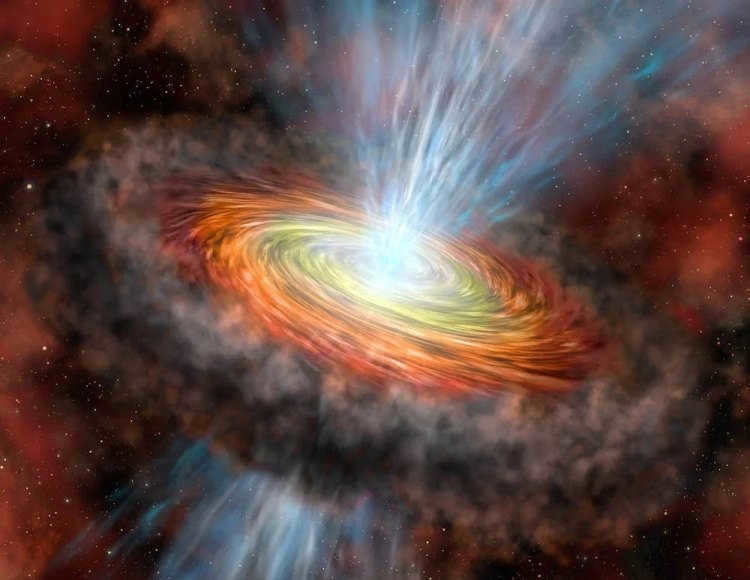
Next came the stages of the star’s formation:
- Compact clumps started to stick together from the clouds of dust and gas.
- Once they reached critical density levels, the clumps began to rotate, following the law of conservation of momentum.
- The increased pressure caused the clump to heat up to high temperatures, resulting in the emission of electromagnetic waves across a wide spectrum.
- Most of the matter accumulated in the central clump, while the remaining matter gathered in an outer ring surrounding it (similar to Saturn).
- The central clump gradually transformed into a star (the Sun), with the ring serving as the foundation for the protoplanetary disk.
- Planets form through the involvement of metals and silicates in the protoplanetary disk.
The Prussian philosopher Immanuel Kant (1724-1804) and the French mathematician and astronomer Pierre-Simon Laplace (1749-1827) are credited with the development of the nebular theory, which provided the first understanding of how stars differ from other celestial bodies. This theory is also known as the Kant-Laplace theory.
Hydrogen, the lightest element on Mendeleev’s table, is the fundamental “building” block for all celestial bodies.
Astrophysicists have demonstrated that hydrogen constitutes 88% of all atoms in the Universe, while the remaining 12% are made up of the other elements on the periodic table.
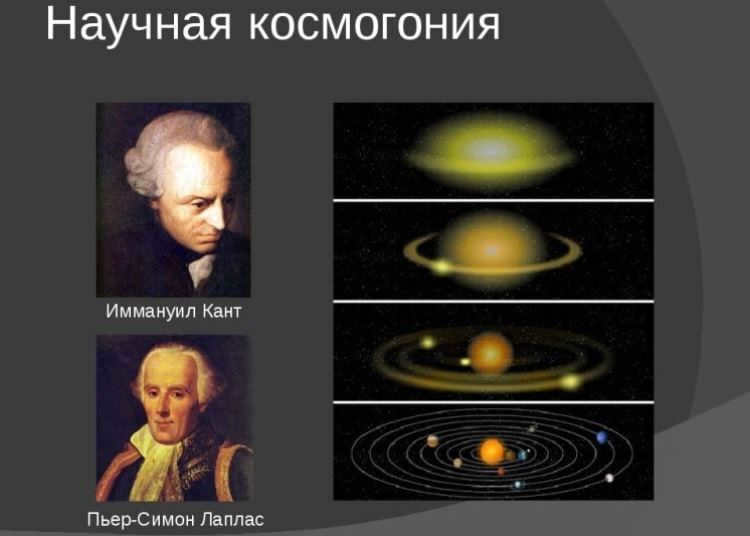
Thermonuclear reactions serve as a cosmic energy source.
Through the utilization of various physical and chemical investigative techniques, the scientific community has confirmed that thermonuclear reactions are the primary origin of energy in the vast expanse of the Universe. These reactions facilitate the synthesis of new atoms, which possess distinct atomic numbers within the Mendeleev table, from the original chemical elements. Consequently, an immense amount of energy is emitted as a result of this nucleosynthesis process.
Hydrogen serves as the principal fuel for these reactions and constitutes over 70% of the composition of stars. The initiation of a nuclear reaction necessitates the attainment of temperatures surpassing 3.0*10 °C. Simultaneously, the minimum initial mass must be no less than 0.075*MSun.
The reaction equation is displayed as follows:
- Two protons (ionized hydrogen nuclei) collide to create a deuteron, which is a deuterium nucleus (a hydrogen isotope indicated as ²H or d) made up of one proton and one neutron.
- The deuteron then collides with another proton to produce the helium-3 isotope – 2He 3 .
- The final step involves the fusion of two helium-3 nuclei, resulting in helium-4 and the release of 2 protons.
As a consequence of this sequence of reactions, one helium-4 nucleus is formed from 4 protons, and 98% of the star’s energy is emitted.
Stars differ from planets in that their life cycles are driven by fusion processes.

What are the visual differences between planets and stars?
When looking at the night sky filled with bright “dots,” it is possible to differentiate between planets and actual stars with the naked eye by considering a few key facts.
Unlike stars, planets are visible because they reflect light from their surfaces, which is produced by thermonuclear reactions in stellar light sources. Therefore, upon closer observation, even without a telescope, one can notice that most of the celestial “dots” flicker – indicating stars, while the planets emit a constant glow.
Due to the immense distance between Earth and stars (the closest one being 4.2 light years away from the solar system), their positions in the sky remain nearly constant.
While observing the night sky, one can also observe that the planets have a different movement compared to the stars. This is because the planets continuously orbit around the Sun along their own paths.
Amongst amateur astronomers, planets are sometimes referred to as “wandering stars”. However, detecting this “wandering” requires multiple observations over several nights, as it is a relatively slow process.
To identify a planet, one can look for a “stray star” within a well-known constellation.
When searching for planets, it is best to look near the zodiac constellations, as the Sun’s path follows the zodiacal constellations.

Jupiter and Venus are the two brightest objects in the sky, ranking only below the Moon and the Sun in terms of brightness. Venus can even be visible during the day at times.
Each planet has its own unique color:
- Venus appears white, but can have a yellowish hue near the horizon.
- Jupiter is yellowish white in color.
- Saturn has a lead or matte yellow color.
- Mars is mostly red, but can sometimes appear orange or pink, depending on the time of year on Mars.
The twinkling of stars and other celestial objects is caused by the Earth’s atmosphere. When light passes through the atmosphere, it scatters and refracts due to the varying temperature, density, and chemical composition of the gases.
Planetary bodies are in much closer proximity to the celestial bodies, which is why they appear as radiant disks to the naked eye. Each individual point on the disk also exhibits a flickering effect, but due to the presence of numerous point clusters, the overall light flux is averaged out.
If the brightness of one point decreases, it is compensated by an increase in the brightness of its neighboring point. As a result, the planets emit a uniform and steady glow.
The primary distinction between the planets in our solar system and Earth lies in the absence of a life-sustaining atmosphere.
Video about the subject matter
Below you can find a video that provides a comparison of various celestial bodies such as planets, stars, and even galaxies.





